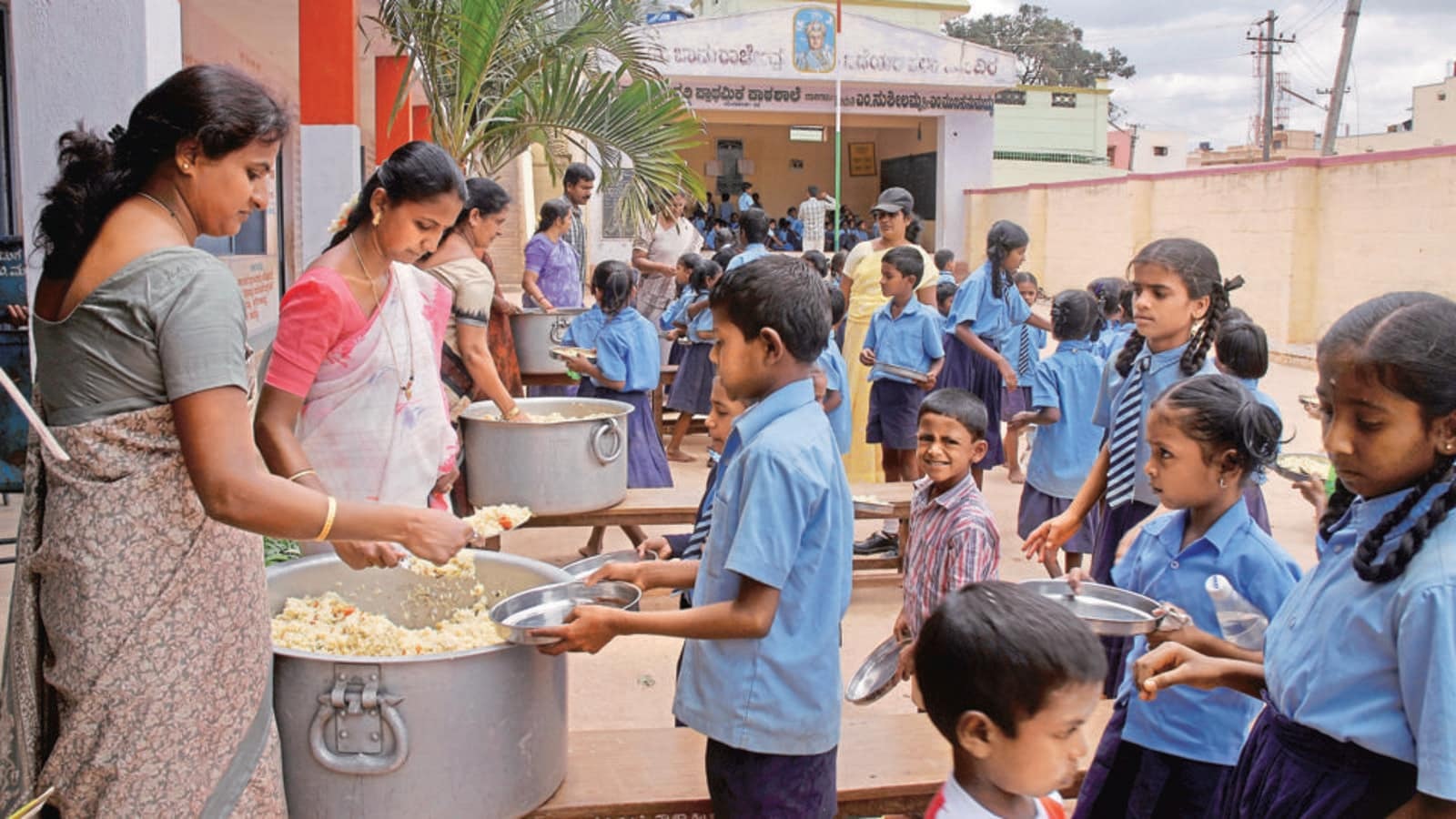Description

Copyright infringement not intended
Context: The Union Government has updated nutritional criteria in its child food safety programmes.
Details
- The revised standards are based on the recommendations of an inter-ministerial committee, which submitted its draft report last year. The committee had also suggested making eggs mandatory in the meals, but this proposal has not been implemented yet.
- States and Union Territories are free to include eggs and other items in their menus, as long as they meet the new standards.
States' autonomy to alter food menu
- There are no restrictions on states or union territories adding eggs and other items to the menu of food safety programmes such as midday meals (now known as PM Poshan) at schools or the Integrated Child Development Services (ICDS) scheme at anganwadis, which covers pre-school children as well as pregnant and lactating mothers.
- If states are hesitant to include eggs, they will need to adjust their menus and include more products such as pulses and green leafy vegetables to meet the new guidelines.
- Currently, 14 states and UTs include eggs in the midday meal.

National Food Security Act (NFSA) of 2013
- The National Food Security Act (NFSA) of 2013 aims to provide adequate food and nutrition to the most vulnerable sections of society.
- The Act specifies the minimum nutritional standards for different groups of beneficiaries, such as children, pregnant and lactating women, and adults.
Amended National Food Security Act (NFSA) Schedule II
- The amended NFSA schedule II, which was notified on January 25, 2023, fixes nutritional standards for nine groups based on their age, gender, and physiological status.
- The standards for some existing categories such as lower primary classes and upper primary classes have been modified as well.
- For Example: Under the previous norms, every child in lower primary classes was entitled to get 450 kilocalories (kcal) and 12 gm of protein with midday meals. Now, the protein quantity has been increased to 15-20 gms, while fat (18-21 gms) and carbohydrates (70 gms) are part of the mix as well.
- The standards also include micronutrients such as calcium, zinc, iron, folate, Vitamin A, Vitamin B6 and Vitamin B12.
Conclusion
- The Centre's decision to revise the nutritional standards is a timely and necessary measure to improve the health and well-being of millions of children and mothers who depend on its food safety schemes. It is hoped that this will help reduce the prevalence of malnutrition and its adverse effects on physical and cognitive development.
- It is also important that the states and Union Territories ensure proper implementation and monitoring of the new norms, and provide adequate funds and resources for their effective delivery.
Must Read Articles:
National Food Security Act (NFSA): https://www.iasgyan.in/daily-current-affairs/national-food-security-act-nfsa#:~:text=The%20Act%20provides%20for%20coverage,two%2Dthirds%20of%20the%20population.
PM POSHAN: https://www.iasgyan.in/daily-current-affairs/pm-poshan-scheme
|
PRACTICE QUESTION
Q. How do you evaluate the impact of the Government's decision to modify the nutritional guidelines for school and Anganwadi meals? The new guidelines increase the quantity of calories and protein while also mandating the inclusion of micronutrients. What are the benefits and challenges of implementing these guidelines for children's health and education?
|

https://indianexpress.com/article/india/govt-revises-nutritional-standards-in-its-food-safety-schemes-for-kids-8584703/











